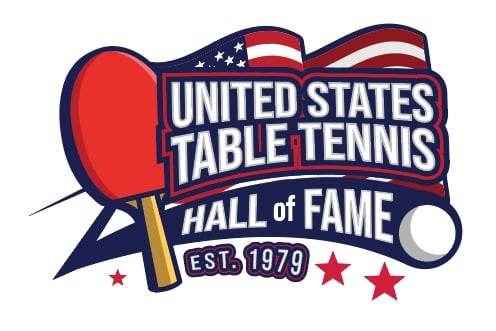Courtesy of Tim Boggan
With the death of USATT Hall of Famer Garrett Nash in the summer of ‘97, who, as a heavy smoker, had been suffering from emphysema for quite some time, we lost one of the great hard-bat stars of the 1930’s and ‘40’s.
Topics readers first became aware of 13-year-old Garrett and two other “new wave” St. Louis players, Bill Price and Robert “Buddy” Blattner, when the three teenagers vacationed up to the Aug. 31, 1934 Cleveland Great Lakes Open–a unique tournament, for it was held outside, on 40-50 tables set up at the wind-blown Euclid Beach Amusement Park.
But as Garrett then reportedly tried his hand at “baseball, track, basketball and boxing” before becoming really serious about playing table tennis, it wasn’t until the Jan., 1938 National Team Championships, where he posted an 11-2 record, including a win over World Doubles Champion Jimmy McClure, that he began to be recognized as one of the country’s best players.
He was also one of the busiest–for, during that season, and the next, he won the annual Reginald G. Hammond Trophy that had been put into play to encourage players, through a system of graded points depending on the importance of the tournament and how one did in it, to participate in as many tournaments as possible. Although he lost in the 8th’s of the National’s that ‘37-38 season, to the winner, the incomparable Hungarian International Laszlo Bellak, Garrett, because of his Midwest successes, was ranked U.S. #4.
The next season he did even better–moved up to U.S. #2. He won the Western Open over Price, and in the inaugural East-West matches at New York City’s Hippodrome he beat 1938 U.S. World Team members Sol Schiff and Bernie Grimes. Then, in the ‘39 National’s, he again beat Sol, before losing -20, 11, -20, 18 in the semi’s to visiting Hungarian Tibor Hazi, twice a World semifinalist.
Sandor Glancz, a former World Doubles Champion, and the originator of these East-West matches, spoke of Nash as having “great talent,” but said that he needed “a better defense and calming down.” Schiff, in his 1939 book, Table Tennis Comes of Age, said much the same thing–that Nash’s “forehand and backhand drives are both magnificent,” but that “his defense is not so good” and he “tends to wildness at times.” However, Garrett’s St. Louis contemporary, another ‘38 World Team member, George Hendry, who played so many matches against him over the years, had another view. “Garrett appeared to some to be wild and reckless,” said George, “but he really wasn’t. He was quite savvy and got a lot out of his game.”
Perhaps, though, for the next few seasons, on court or off, Garrett had reason to be known as the “Dizzy Dean of Table Tennis.” At any event he was inducted into the Army in July of ‘42, and while doing “Public Relations work for the 8th Air Force” in England, and winning some table tennis tournaments besides, he played a high-stakes match against the already legendary World Champion Richard Bergmann. Just exactly what either player, and their backers, could risk wagering, and did at the “renowned Marquis of Queensbury Club” playing site, is highly speculative–but word had it that it was in the thousands of pounds, and Garrett on winning took his share and said, “I spent it well.”
Then it was off to tour in a special “Jeep Show” with Mickey Rooney, and, after the War, USO performances in such strange places as Greenland and Iceland.
In 1947 he was back in the States and winning the St. Louis District over Price and Hendry. Then in 1948 he made the U.S. Team to the London World’s where, in a Swaythling Cup match, he again beat Bergmann, again the World Champion that year. Depending on the aficionado, Nash was ranked World #10, 11, or 13, and his picture was on the cover of the September, ‘48 English table tennis magazine.
Garrett’s last hurrah was the 1949 National’s where he lost to Schiff in the quarter’s in 5. That last year there was little difference in his U.S. ranking–he was #3, behind Schiff and Price–from his #2 position 10 years earlier.
After Garrett retired from table tennis, he began playing tournament bridge–and in 1962 his team won the famed Vanderbilt Cup, quite an accomplishment.Today, Nash is remembered as a great entertainer on court and something of the good “bad boy” of the ‘30’s and ‘40’s. He was different–a “character” who helped the spectators come alive. Were it not for him, and more like him, the Sport itself would surely die.
